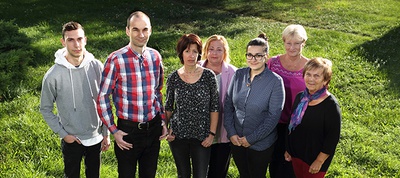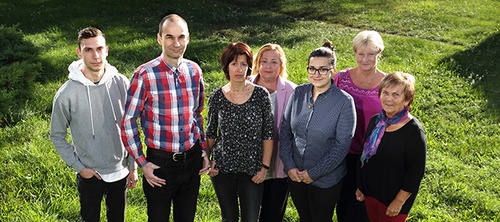Departmental seminar on 30th March 2022
We have a guest, RNDr. Miroslav Šlouf, PhD, from the Institute of Macromolecular Chemistry, Czech Academy of Sciences who will speak about transmission electron mimcroscopy.
Electron diffraction is performed routinely in transmission electron microscopes (TEM), while in scanning electron microscopes (SEM) it has not been available until recently. We introduced a novel method that yields powder electron diffractograms in modern SEM microscopes equipped with pixelated detectors of transmitted electrons (pixelated STEM detectors). The method was developed in collaboration of our Institute of Macromolecular Chemistry CAS with the Institute of Scientific Instruments CAS. It was called 4D-STEM/PNBD, as it converts large 4D-STEM datasets (2D-arrays of 2D-nanobeam diffraction patterns) to a single PNBD pattern (powder nanobeam diffraction pattern, analogous to powder diffractograms from TEM). Unlike the complex 4D-STEM datasets, the 4D-STEM/PNBD patterns are easy to process even without deep crystallographic knowledge.
The seminar will take place in the lecture hall CH3 in person.
The online option remains available only on special request (e.g., for colleagues who are ill/injured or have any other important reason for which they cannot come).


